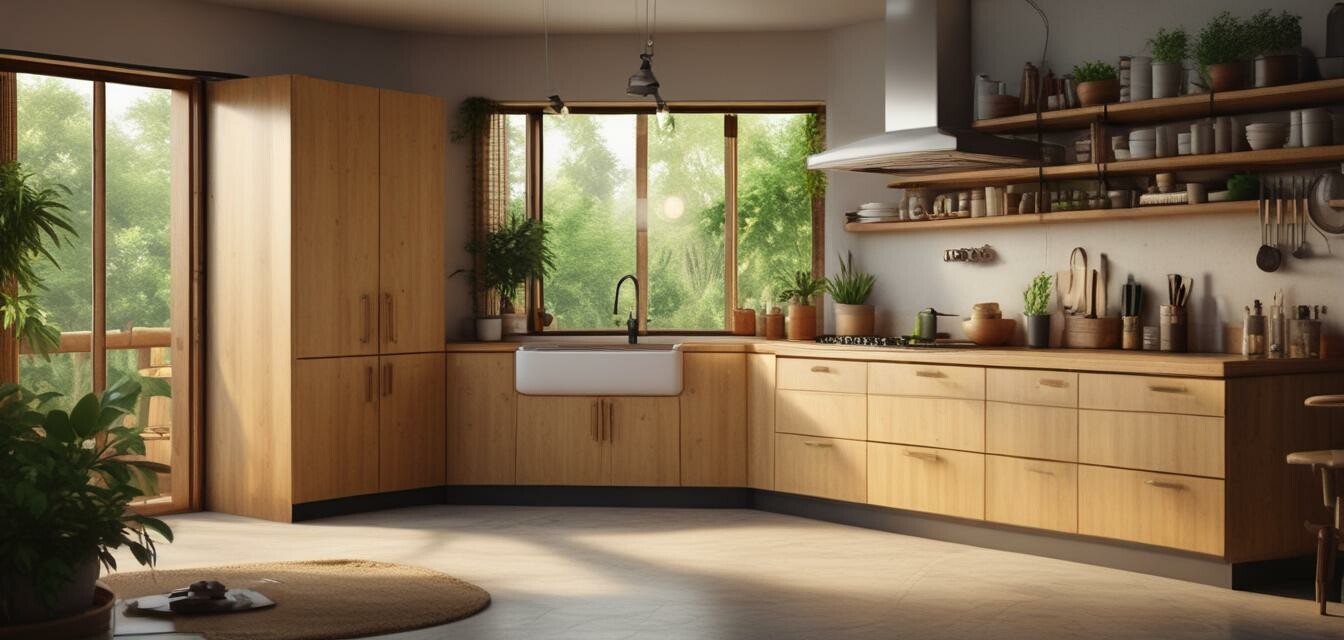
Global Insights into Eco-Friendly Kitchens
Key Takeaways
- Eco-friendly kitchens incorporate sustainable materials and practices.
- International trends reveal diverse cultural approaches to sustainability.
- Innovative designs integrate functionality with environmental consciousness.
- Awareness of eco-friendly options is growing among consumers worldwide.
- Recycling and repurposing are key aspects of modern kitchenware trends.
As the world shifts towards more sustainable living, kitchens are becoming a focal point for eco-friendly practices. Different cultures contribute unique perspectives on how to cultivate an eco-friendly kitchen. From the materials used in kitchenware to energy-efficient appliances, every country portrays its distinct approach to sustainability. This article delves into international trends in eco-friendly kitchens and highlights how diverse cultures integrate sustainability into their culinary spaces.
International Trends in Eco-Friendly Kitchens
1. European Inspirations
In Europe, particularly in countries like Sweden and Germany, sustainability in kitchens focuses heavily on minimalism and multifunctional designs. With a strong emphasis on durability, kitchens are equipped with:
- Bamboo kitchenware for cooking and dining
- Compostable kitchen tools to minimize waste
- Energy-efficient appliances to reduce environmental impact
2. Asian Innovations
Asian countries, especially Japan and China, promote a deep respect for nature in their kitchen designs. Key aspects include:
- Use of locally sourced materials like reclaimed wood and rice husks
- Emphasis on growing ingredients through indoor gardening
- Utilization of traditional cooking techniques that require less energy
3. North American Trends
In North America, the trend leans towards incorporating high-tech gadgets with sustainability. Some popular features are:
- Smart appliances that optimize energy use
- Recycled glass dinnerware for elegant dining
- Reusable silicone products for storage and cooking
Cultural Impact on Kitchen Sustainability
Each culture brings its own values to kitchen sustainability. This dynamic influences everything from product choices to cooking styles. Below are examples of how culture shapes eco-friendly kitchen practices:
| Region | Practices | Materials |
|---|---|---|
| Europe | Minimalism, multifunctional designs | Bamboo, recycled metals |
| Asia | Indoor gardening, low-energy cooking | Reclaimed wood, rice husks |
| North America | Smart technology and recycling | Recycled glass, silicone |
The Role of Design in Sustainability
Design plays a crucial role in promoting sustainability in kitchens. Here are some design elements that aid in creating eco-friendly environments:
- Natural lighting - Reduces energy consumption
- Smart layout - Enhances workflow with minimal waste
- Sustainable fixtures - Fixtures that conserve water and energy
The Future of Eco-Friendly Kitchens
As the push towards sustainability continues, the potential for innovations within kitchen design is vast. Emerging trends we can expect to see include:
- Increased use of compostable materials
- Advancements in smart kitchen technology
- Greater emphasis on sustainable sourcing
Tips for Creating an Eco-Friendly Kitchen
- Start by reducing single-use plastics in your kitchen.
- Opt for energy-efficient appliances when replacing older models.
- Choose kitchenware made from bamboo or recycled materials.
- Include a recycling station in your kitchen for convenience.
Pros
- Reduces environmental impact.
- Creates a healthier living space.
- Enhances kitchen efficiency and functionality.
Cons
- Initial investment may be higher.
- Accessibility can vary by region.
- Requires commitment to maintain sustainable practices.
Conclusion
Understanding and embracing international trends in eco-friendly kitchens can bring about significant benefits to our environment and lifestyle. By incorporating sustainable practices from around the world, we can create cooking spaces that are not only functional but also kind to the planet. For more insights and tips on eco-friendly kitchenware, visit our News and Trends section.
To discover specific products that align with these trends, consider exploring our categories like Bamboo Kitchenware and Eco-Friendly Storage Solutions, where you can find various options to enhance your kitchen sustainably.


